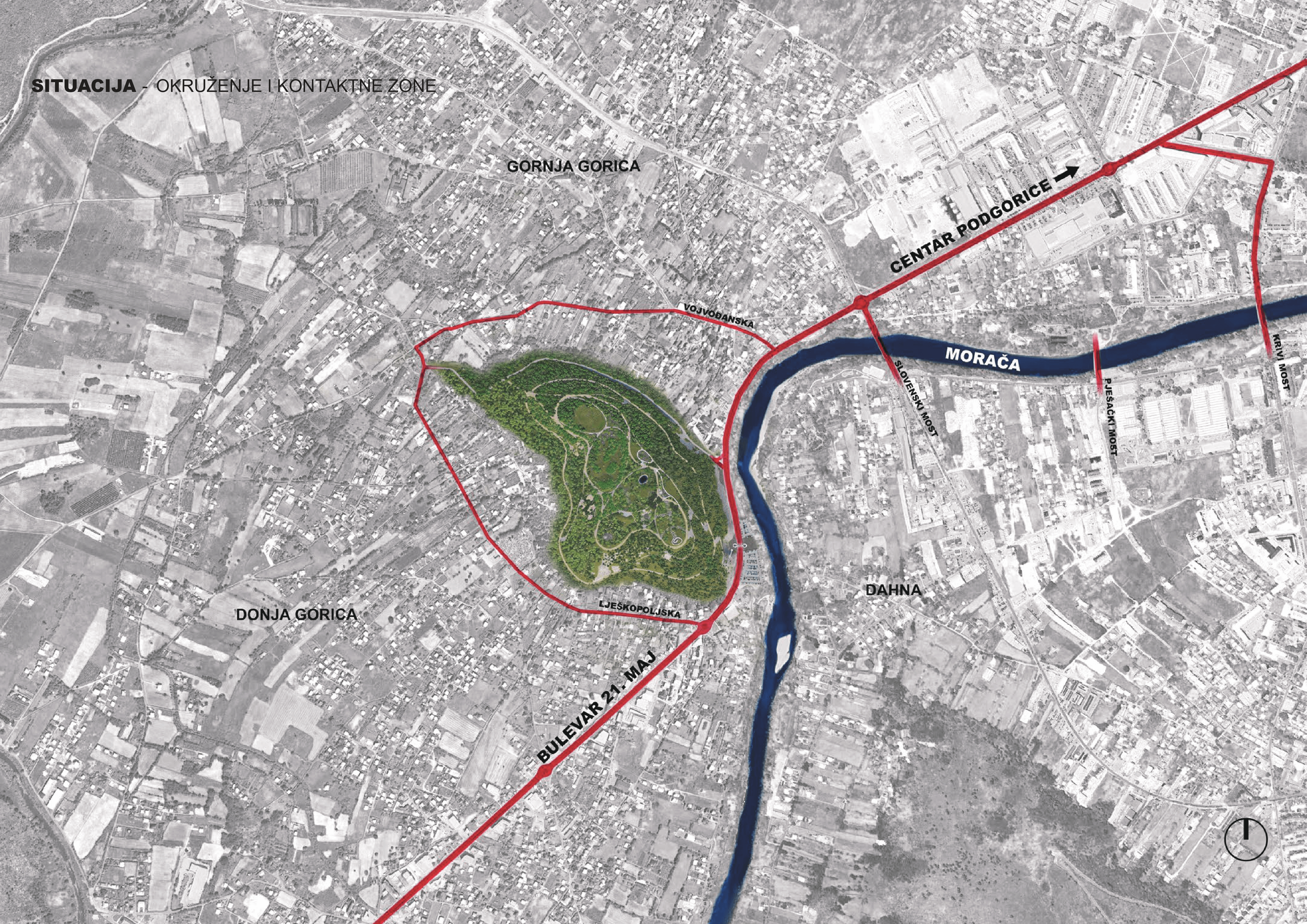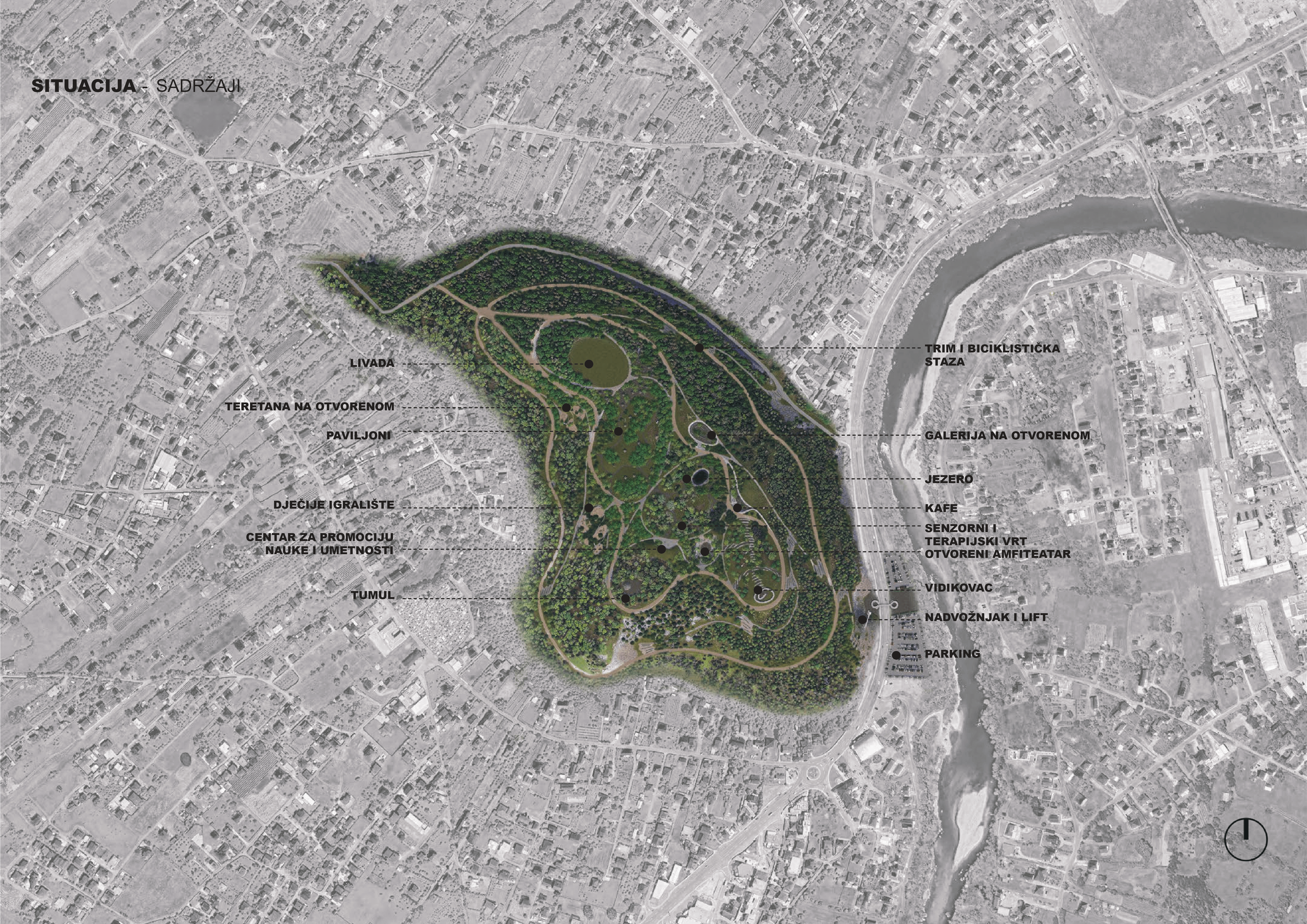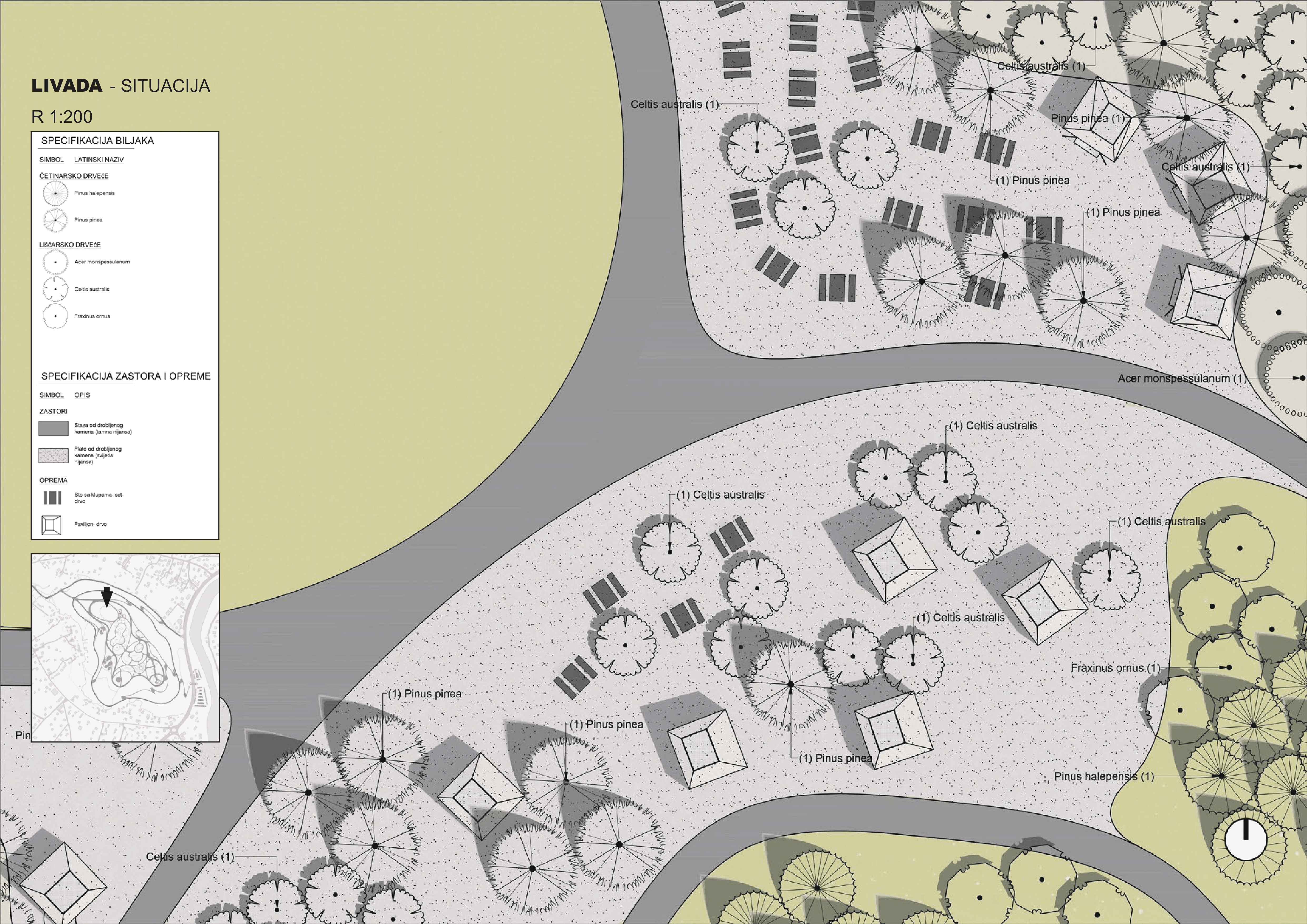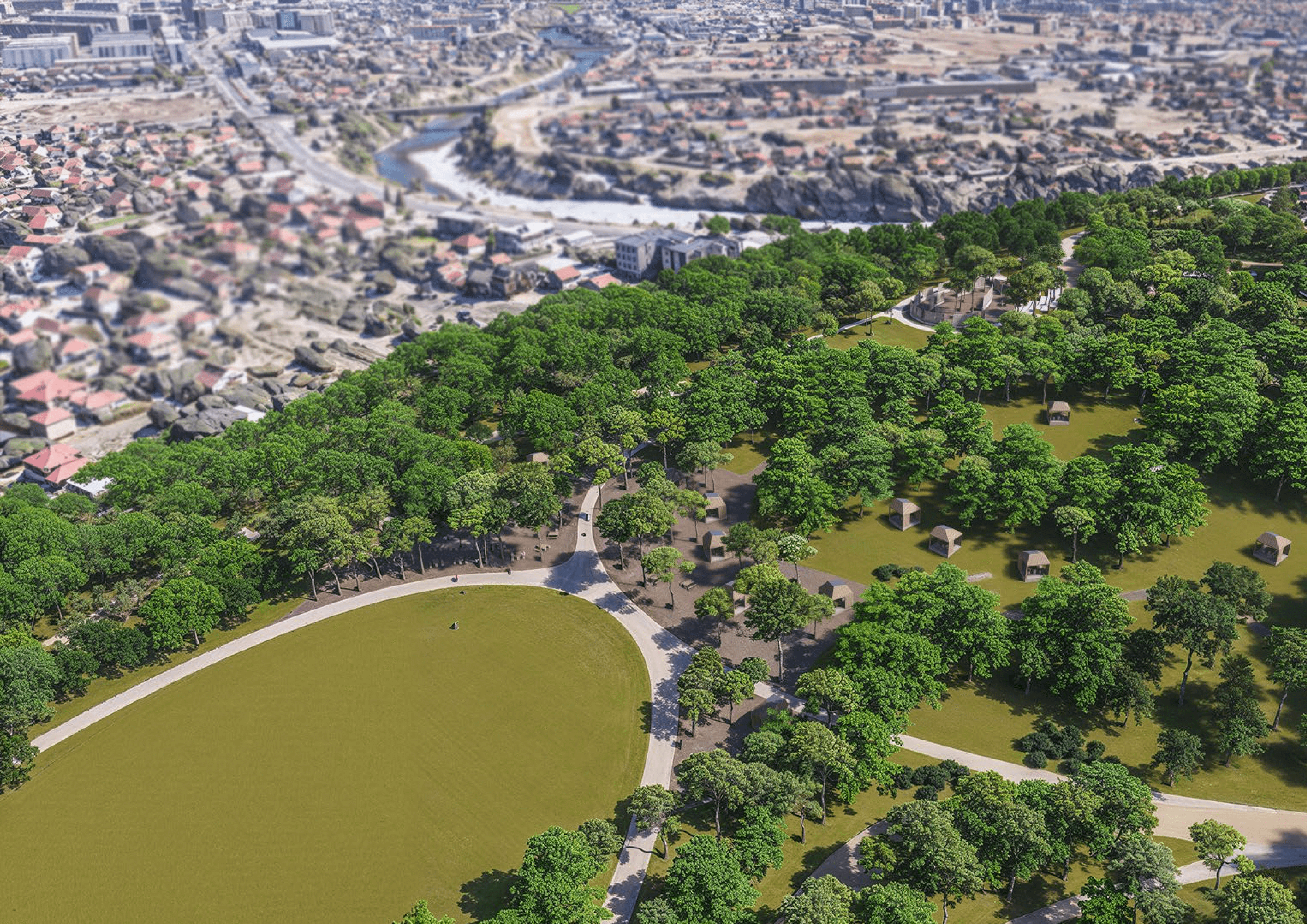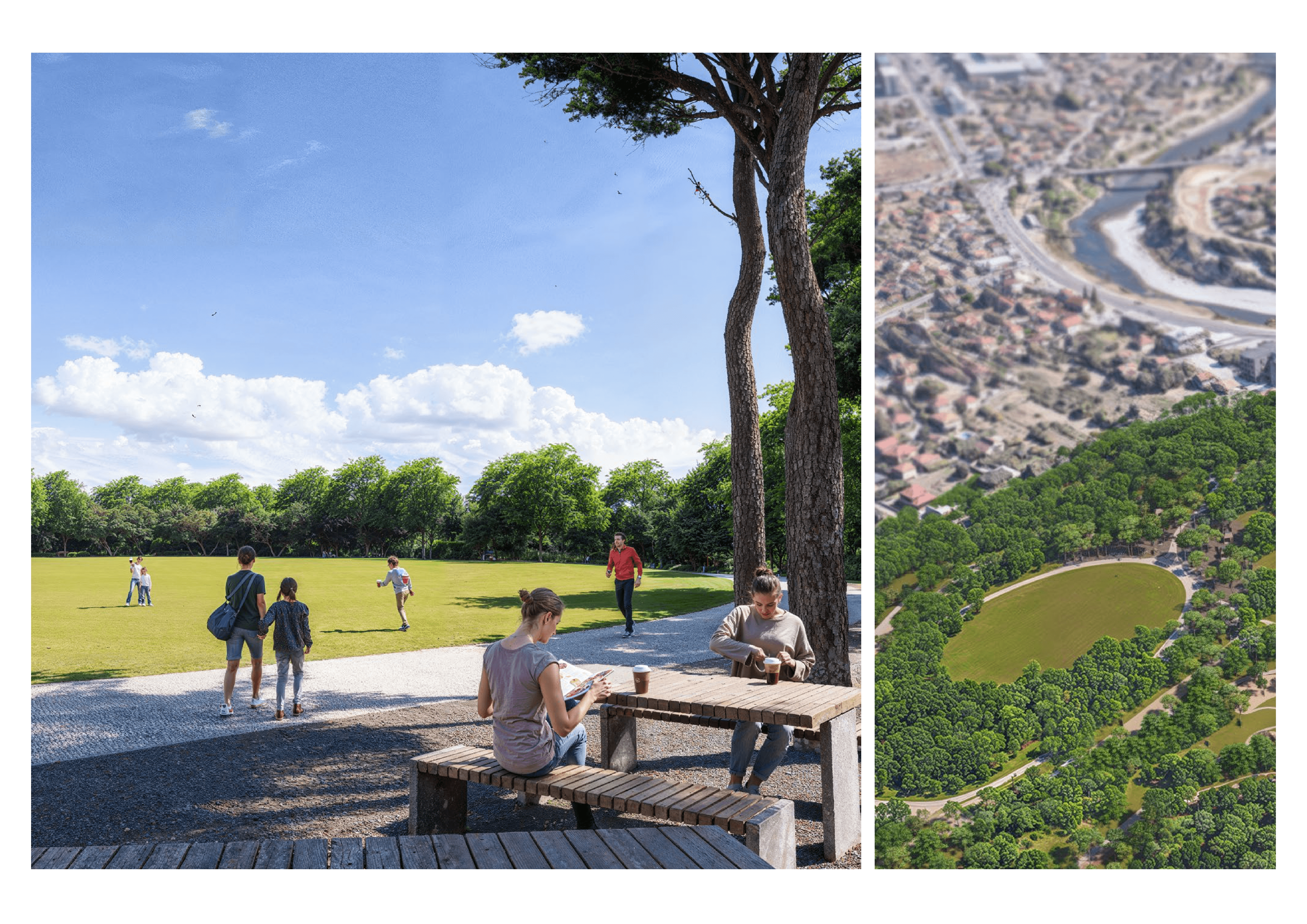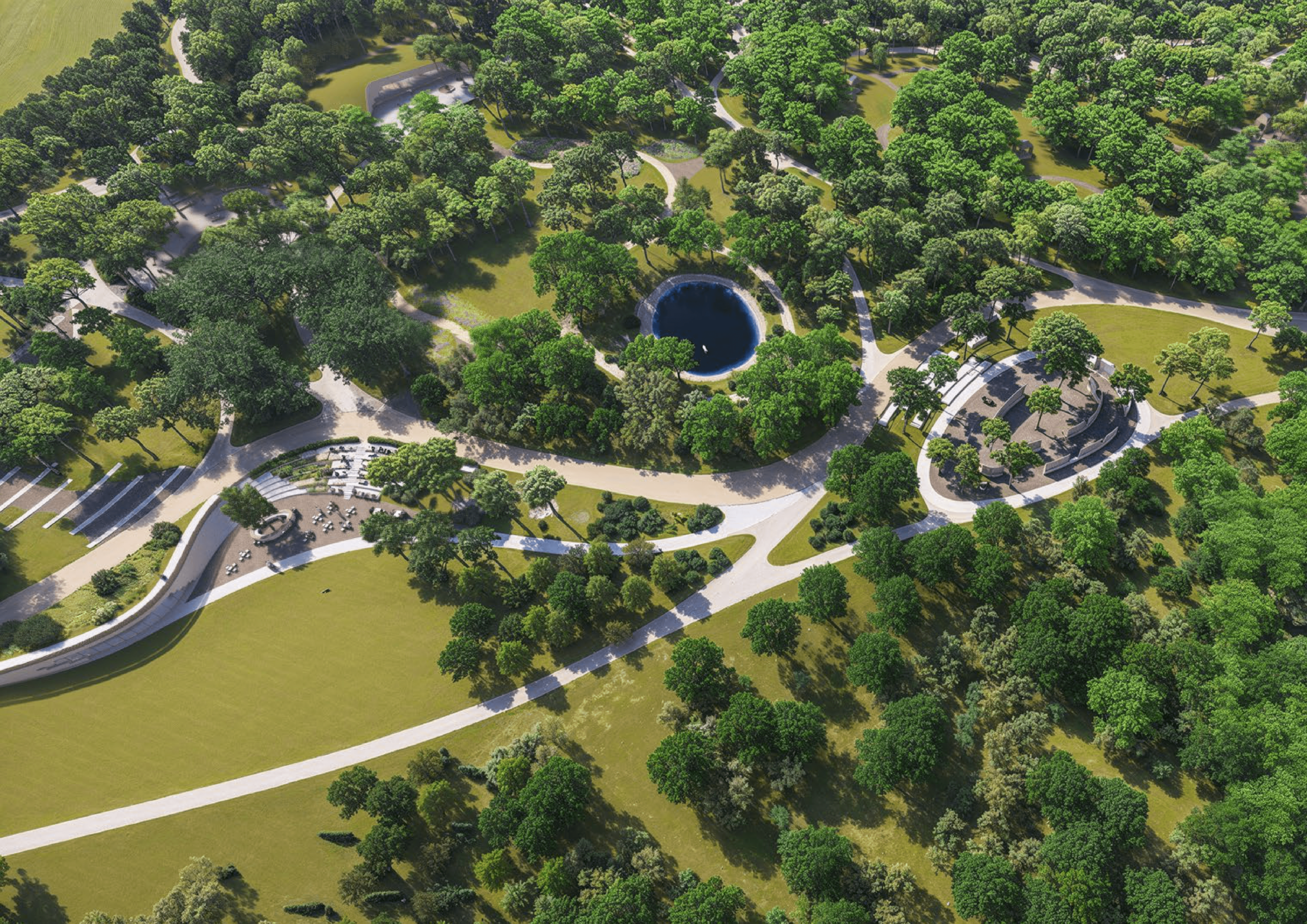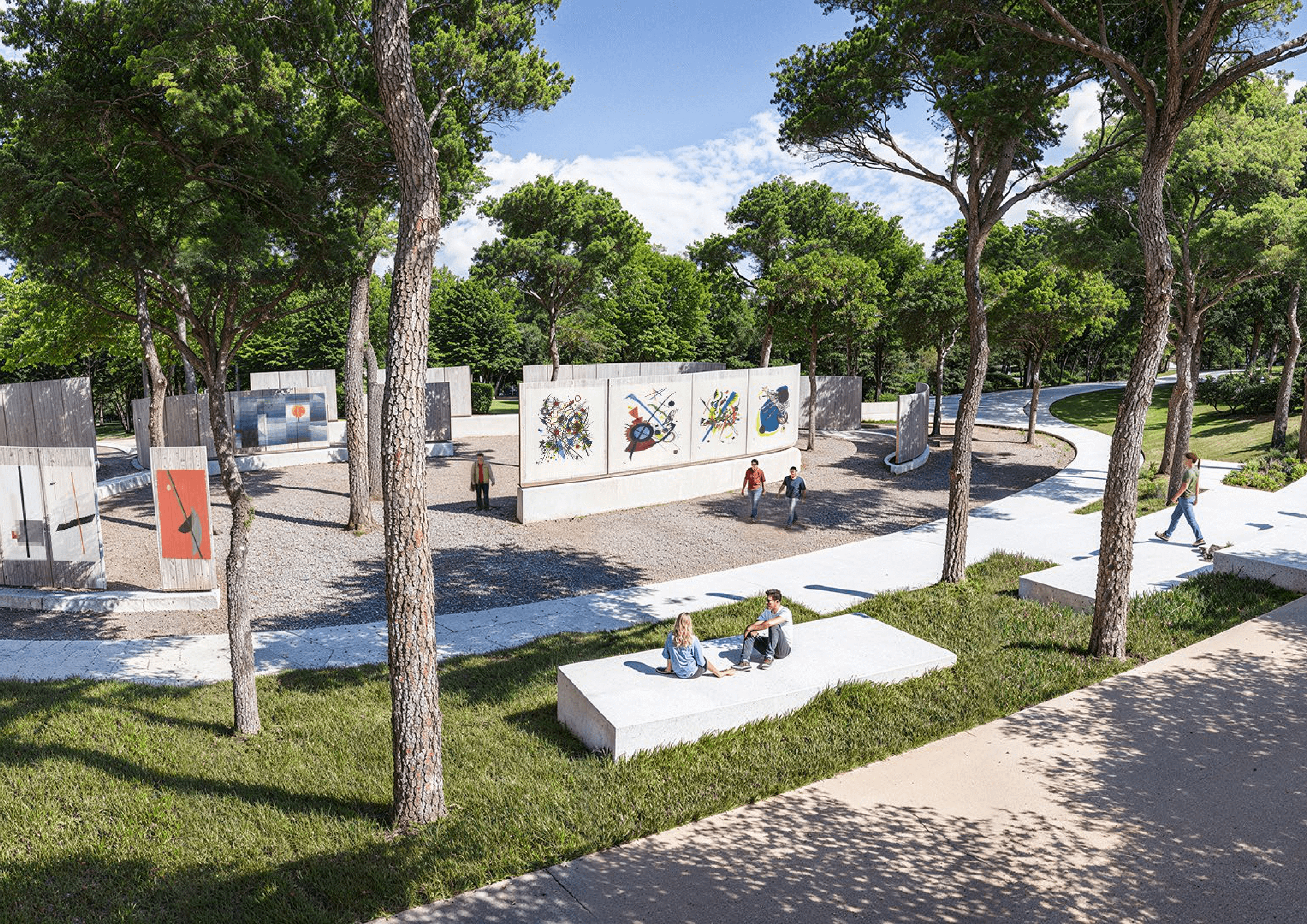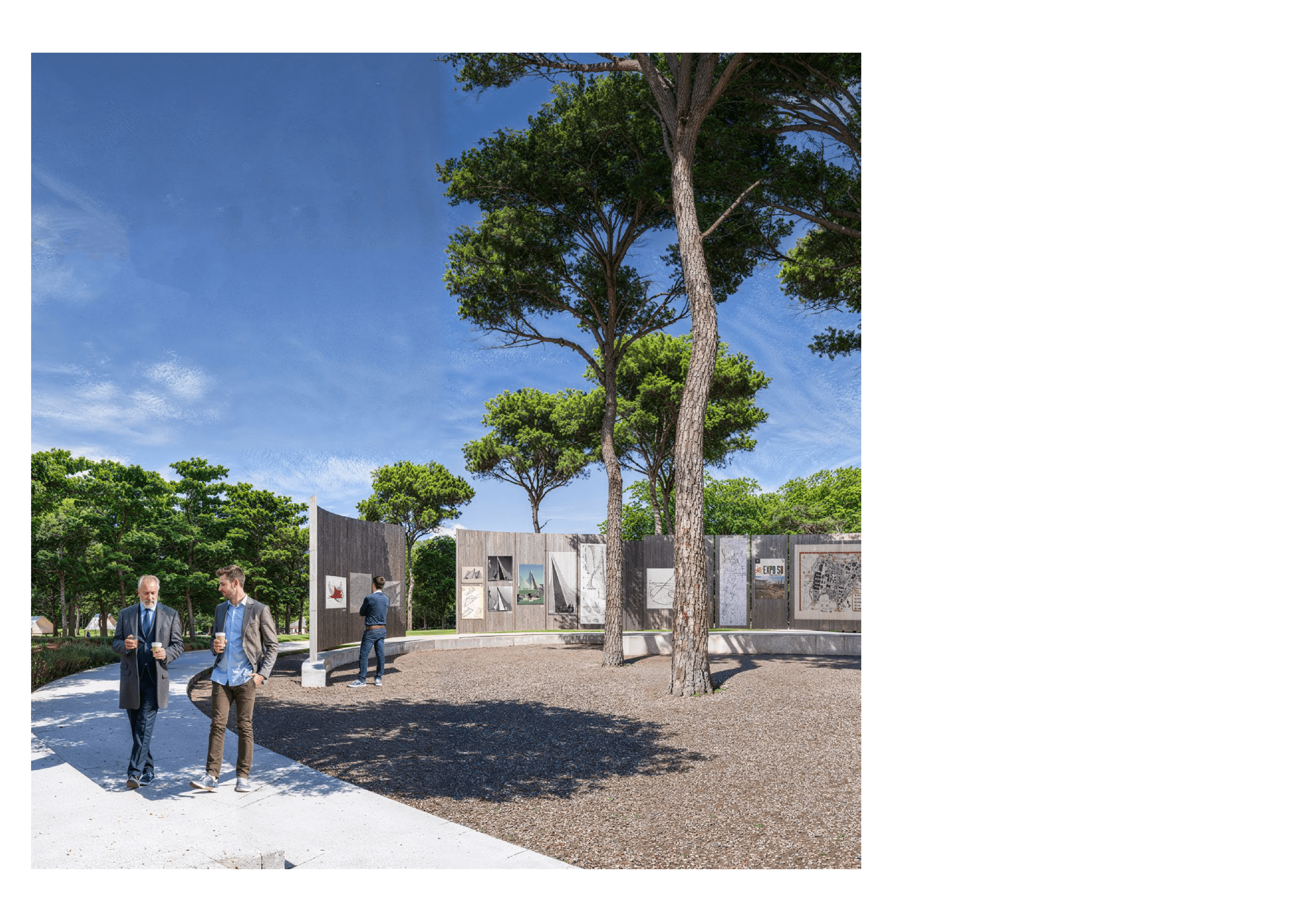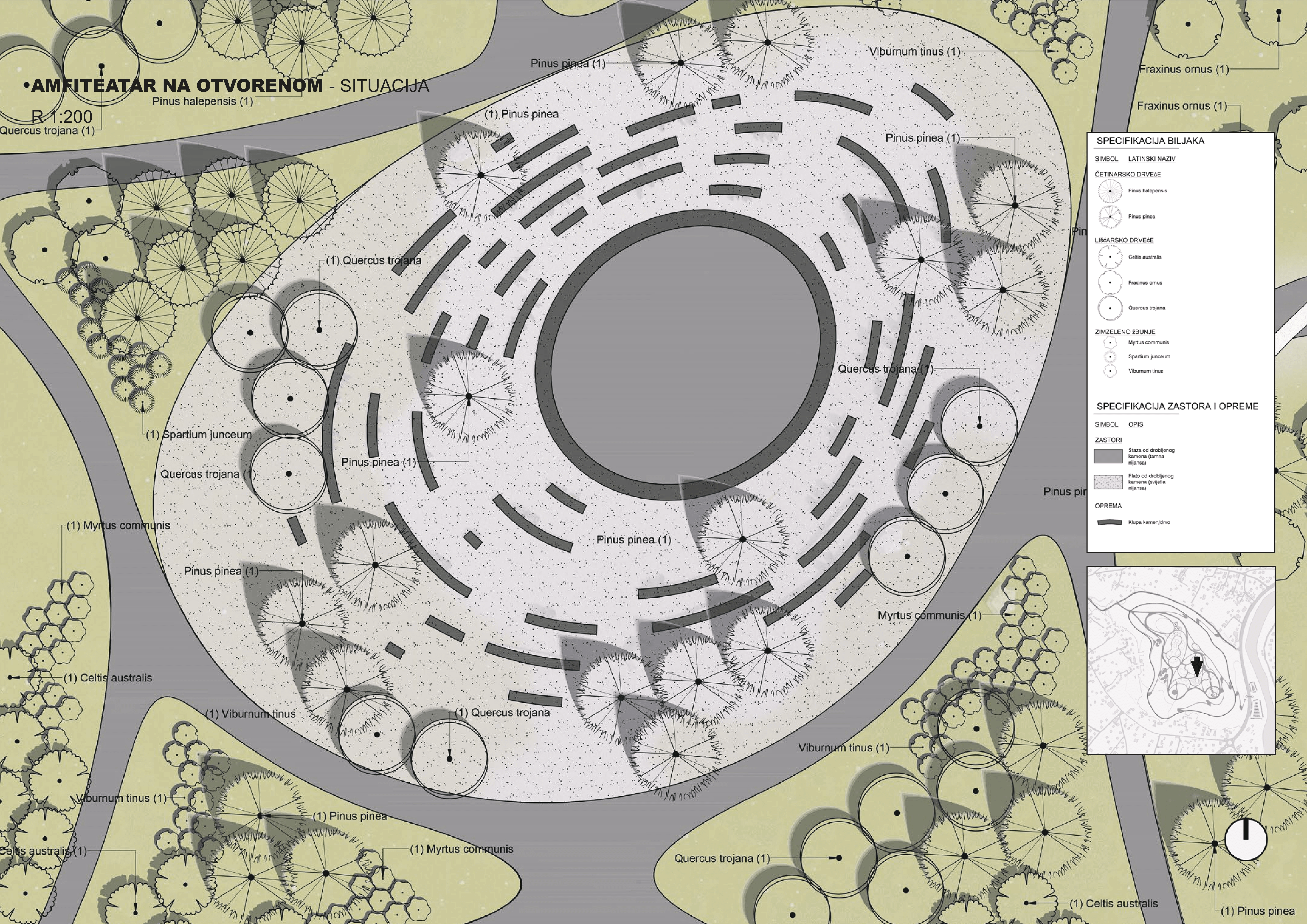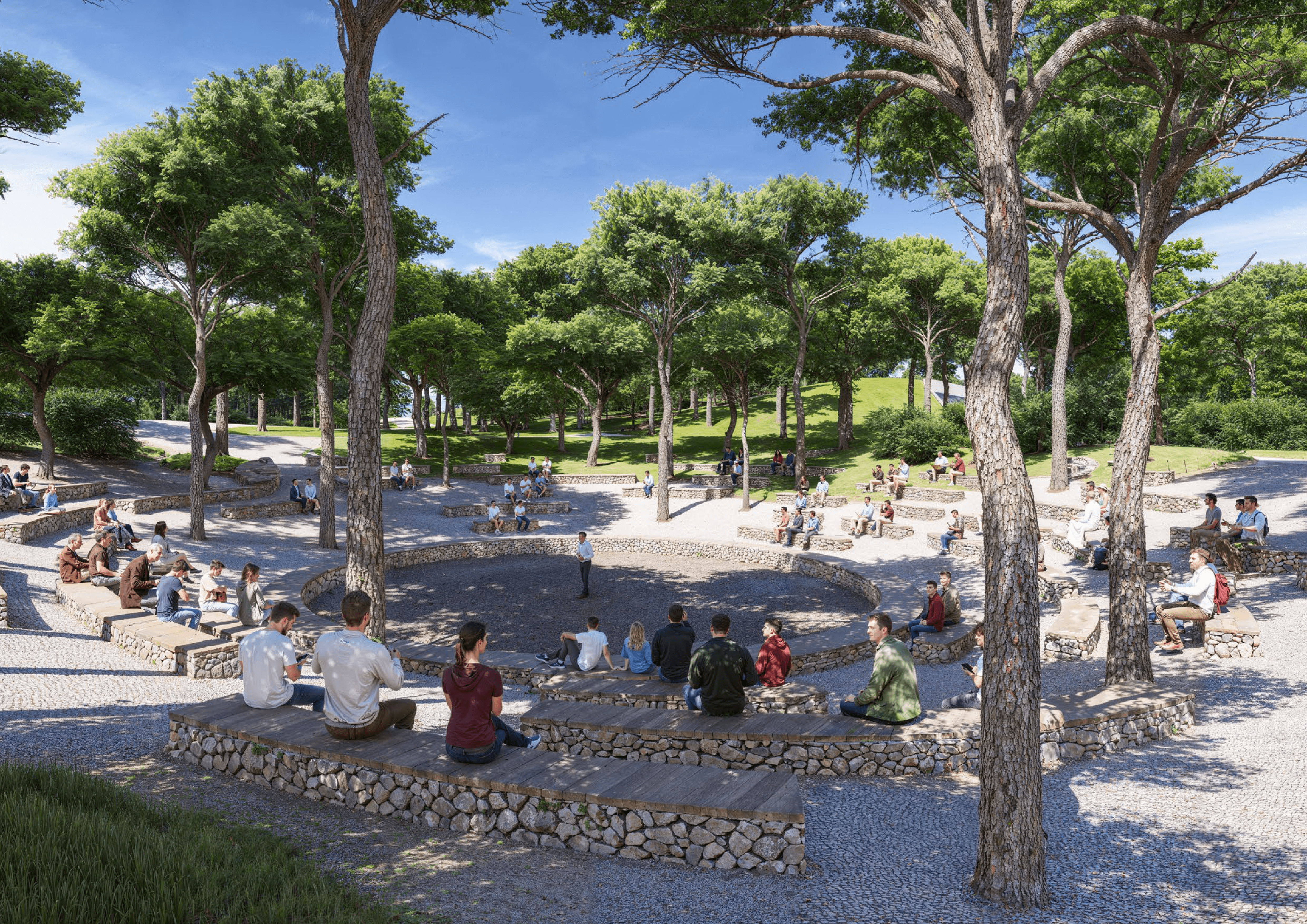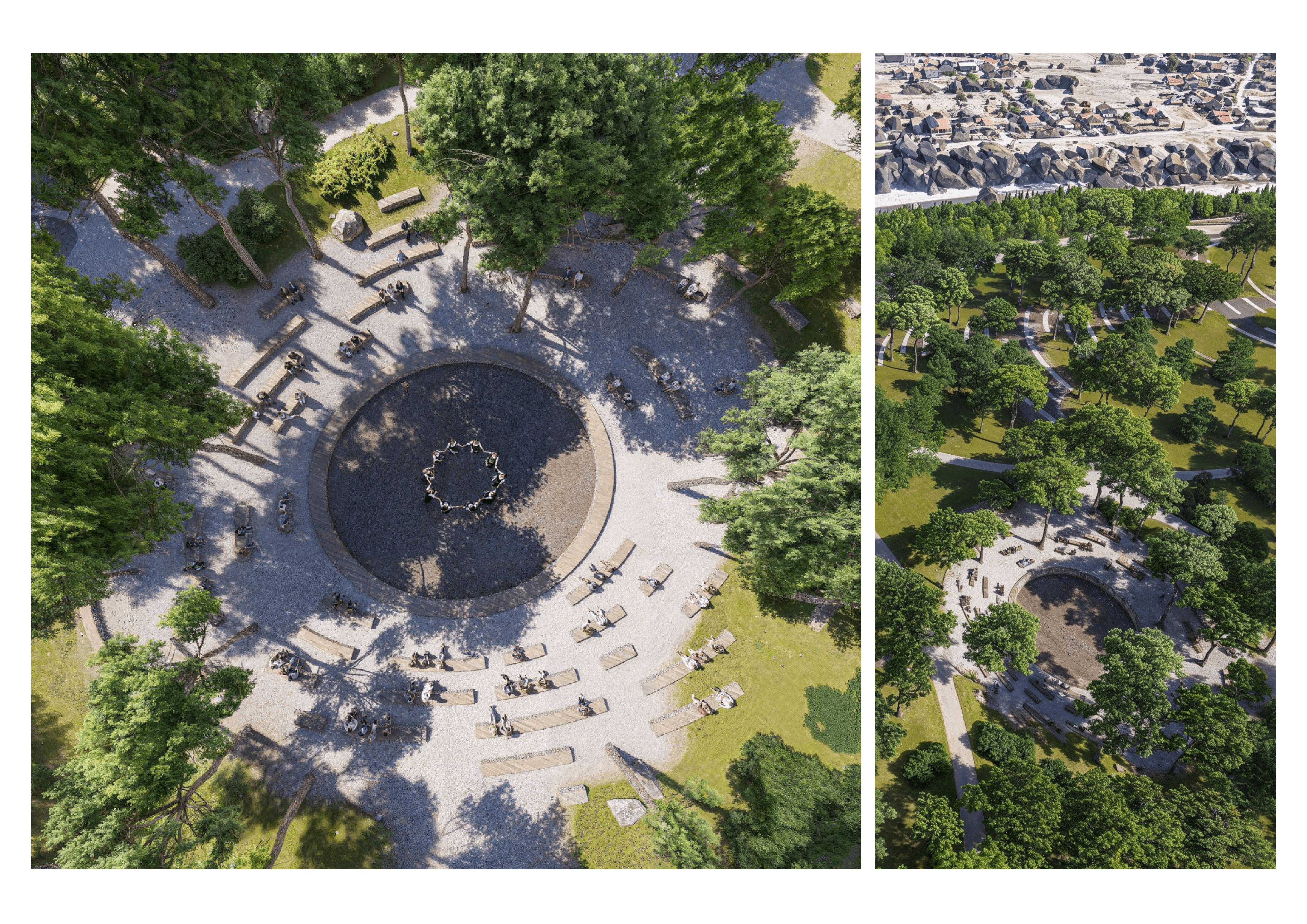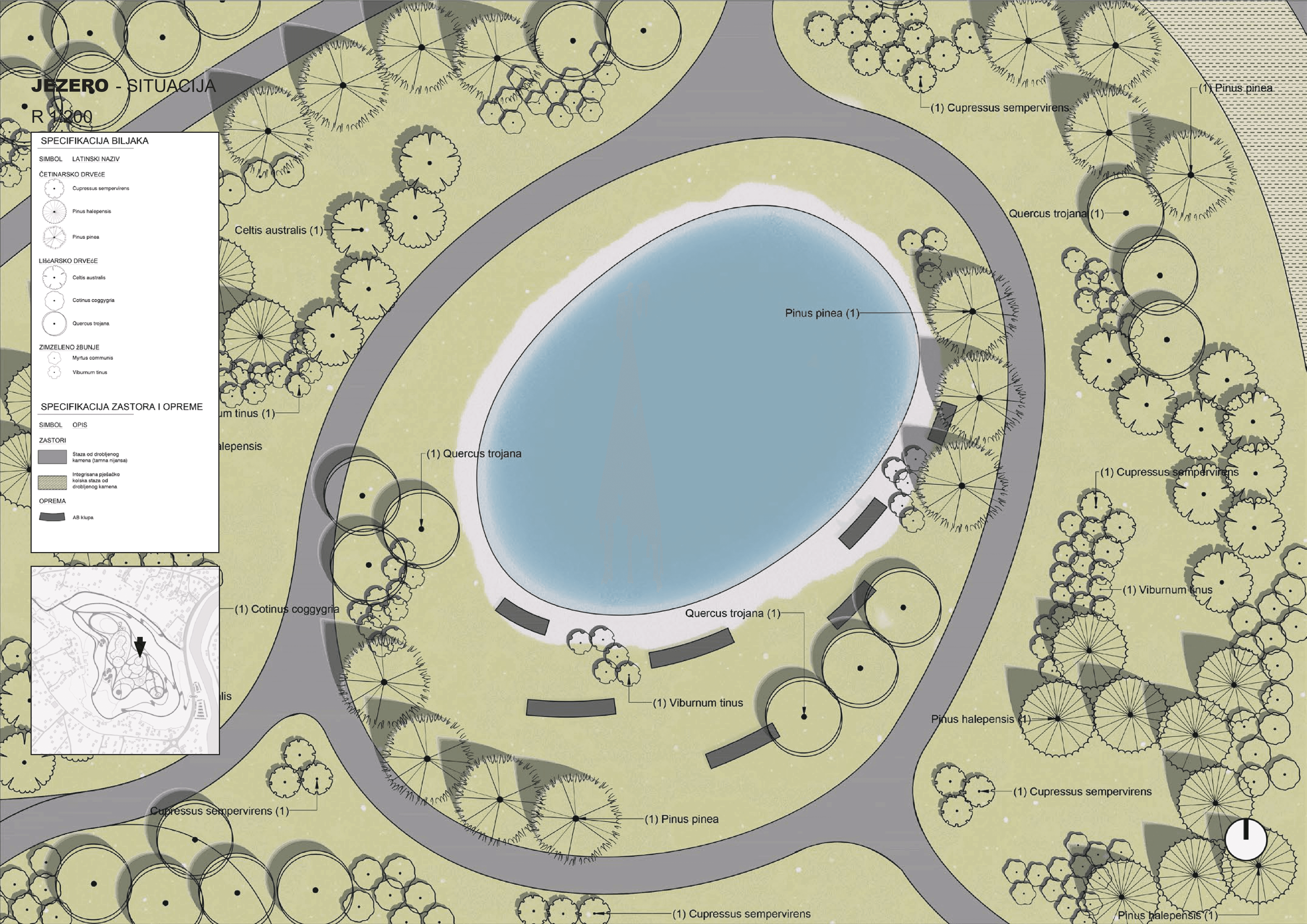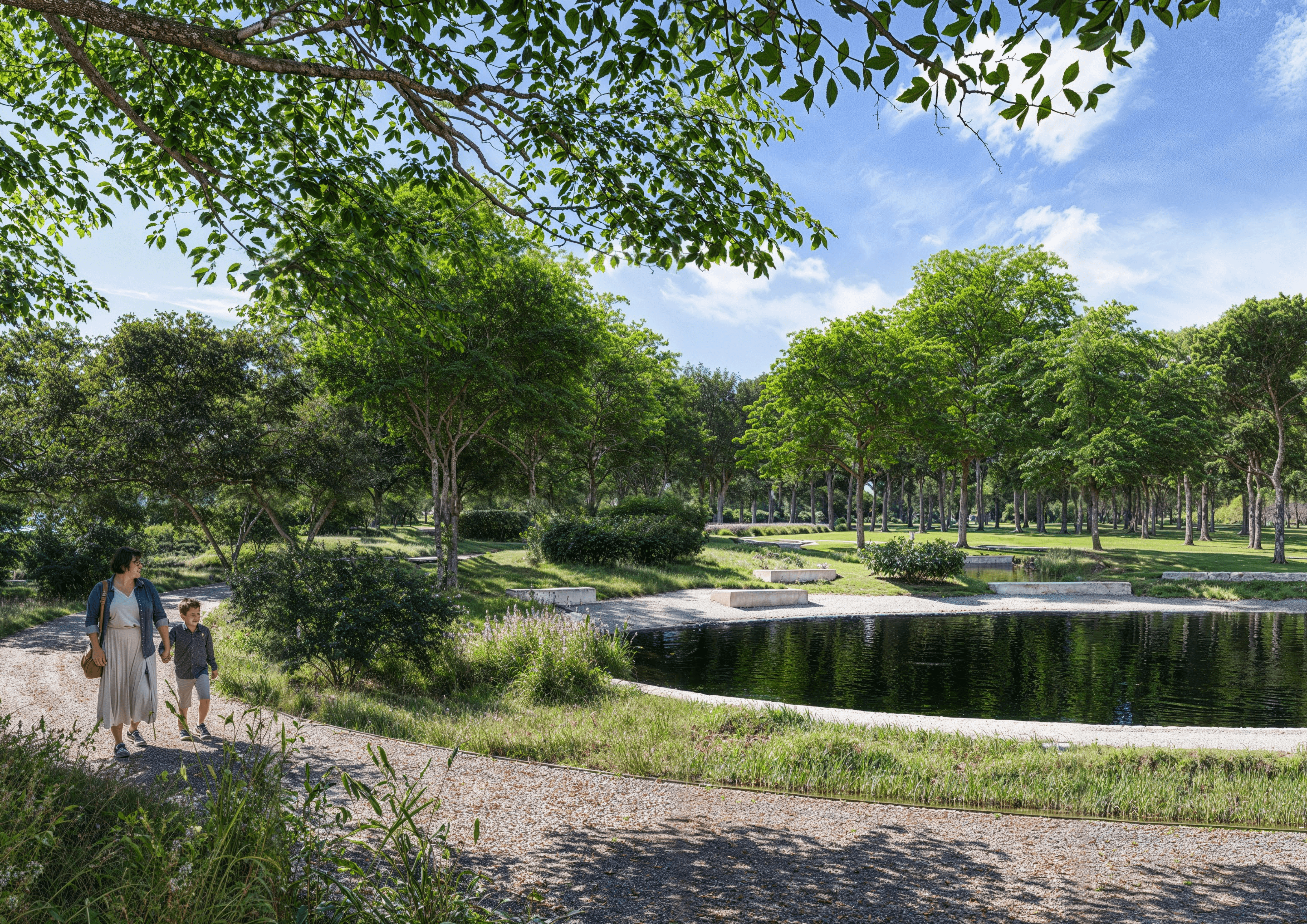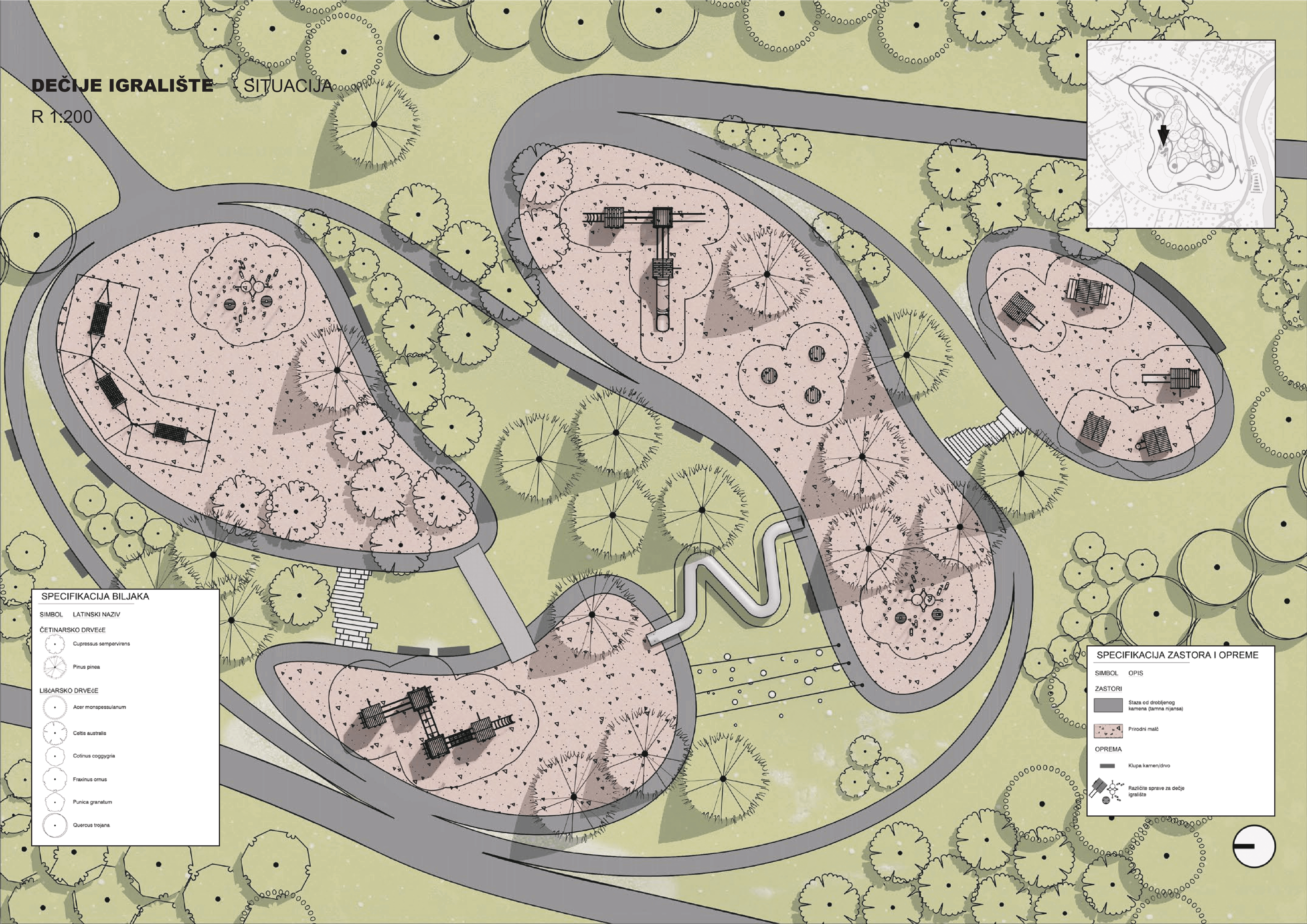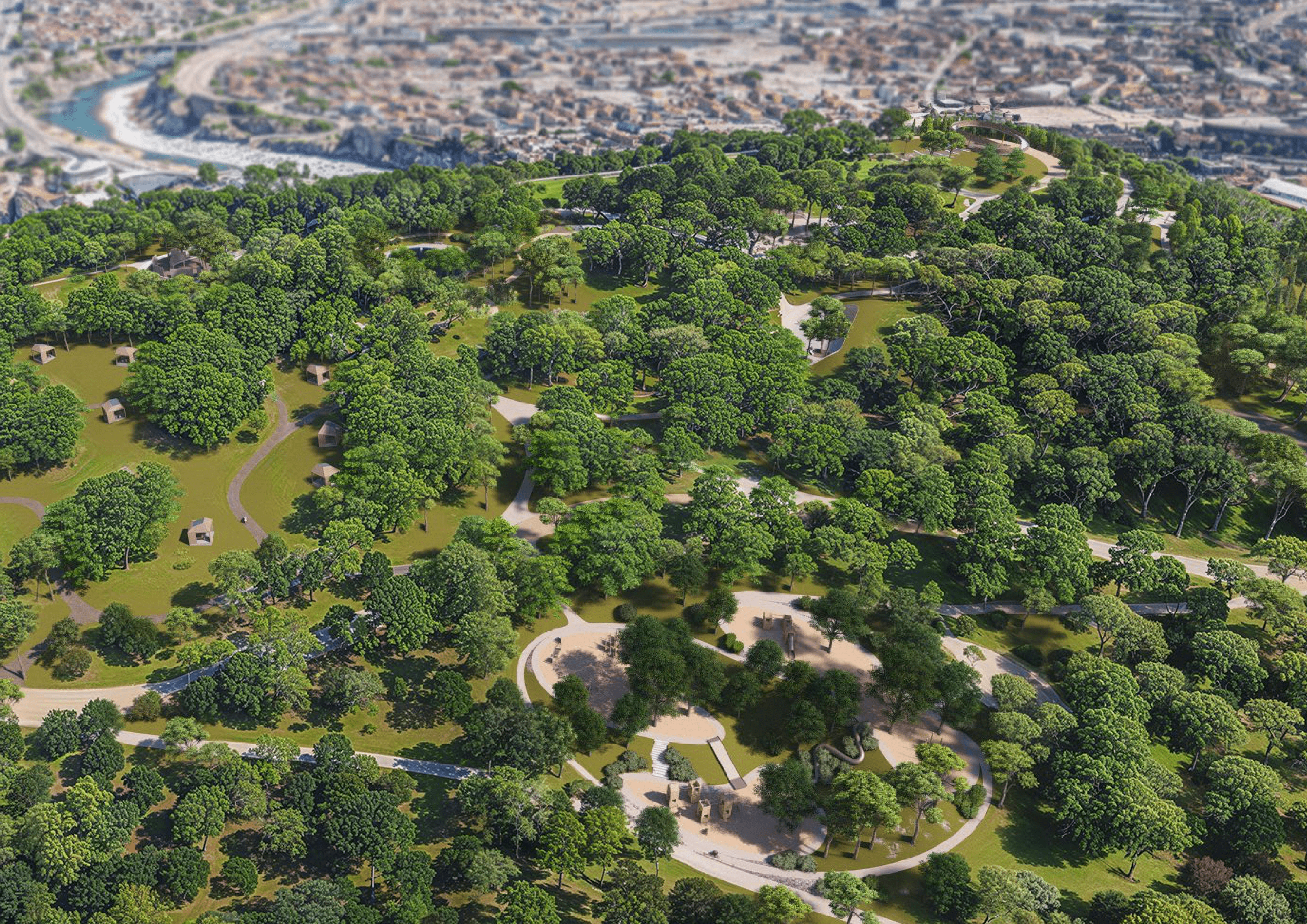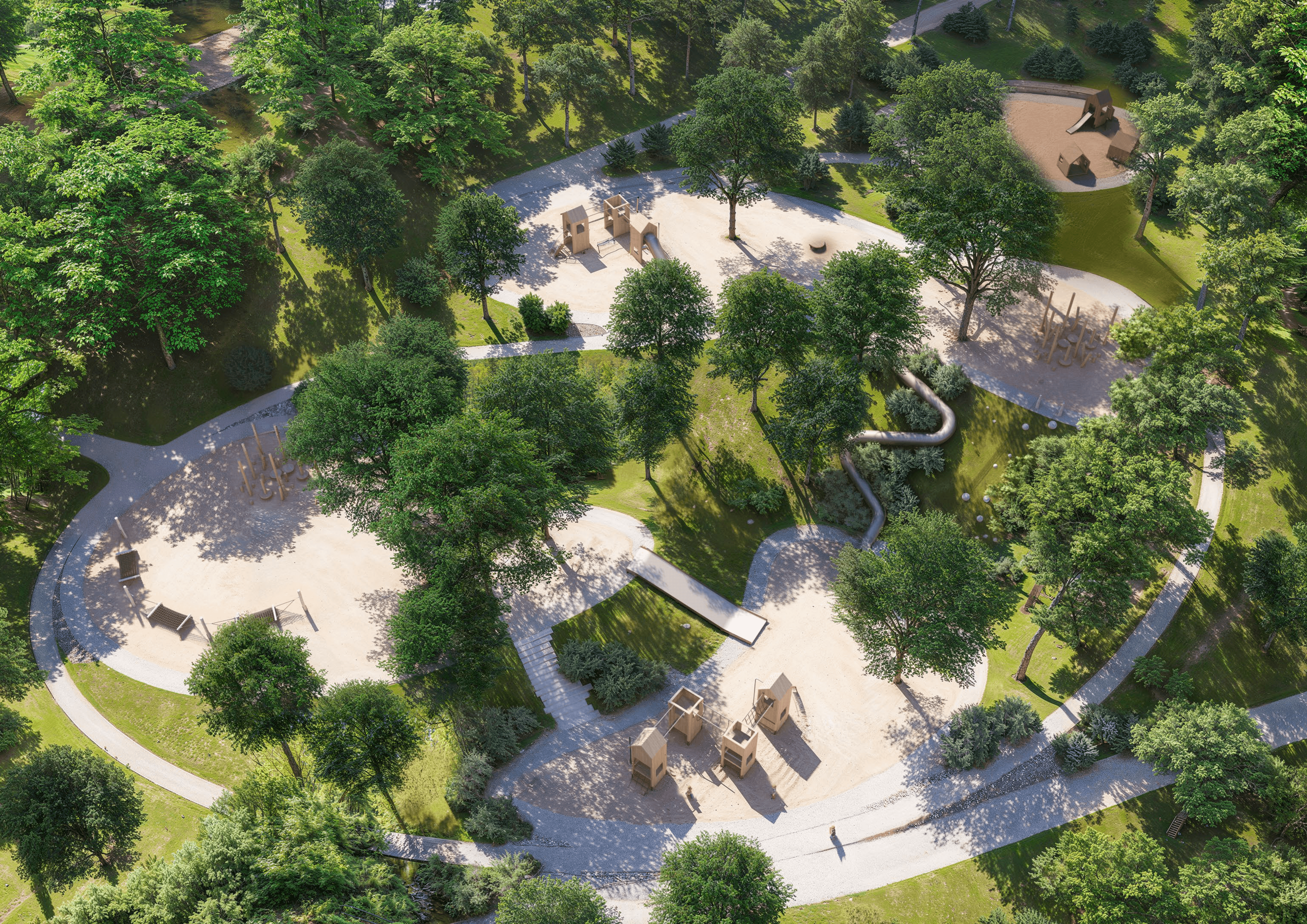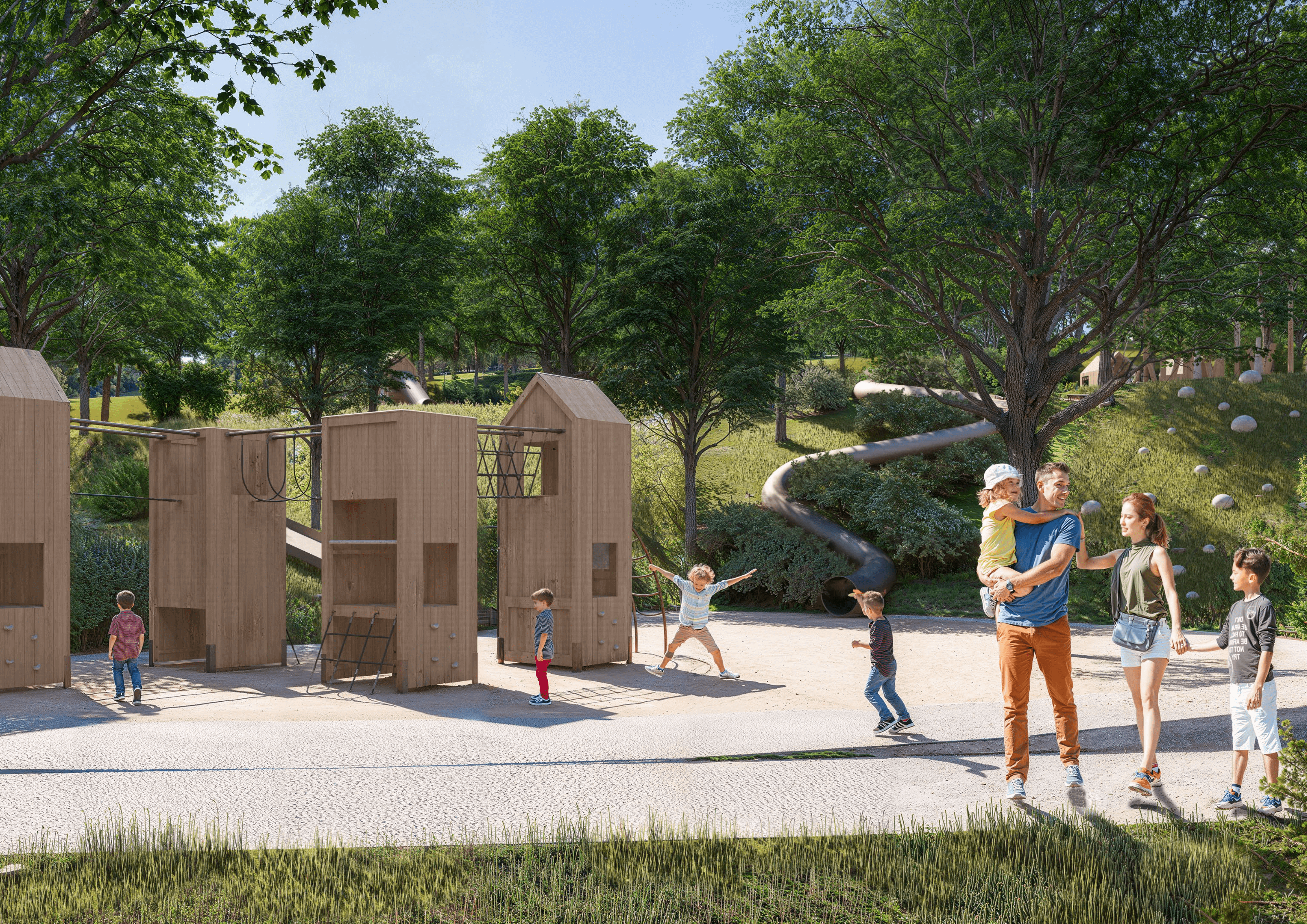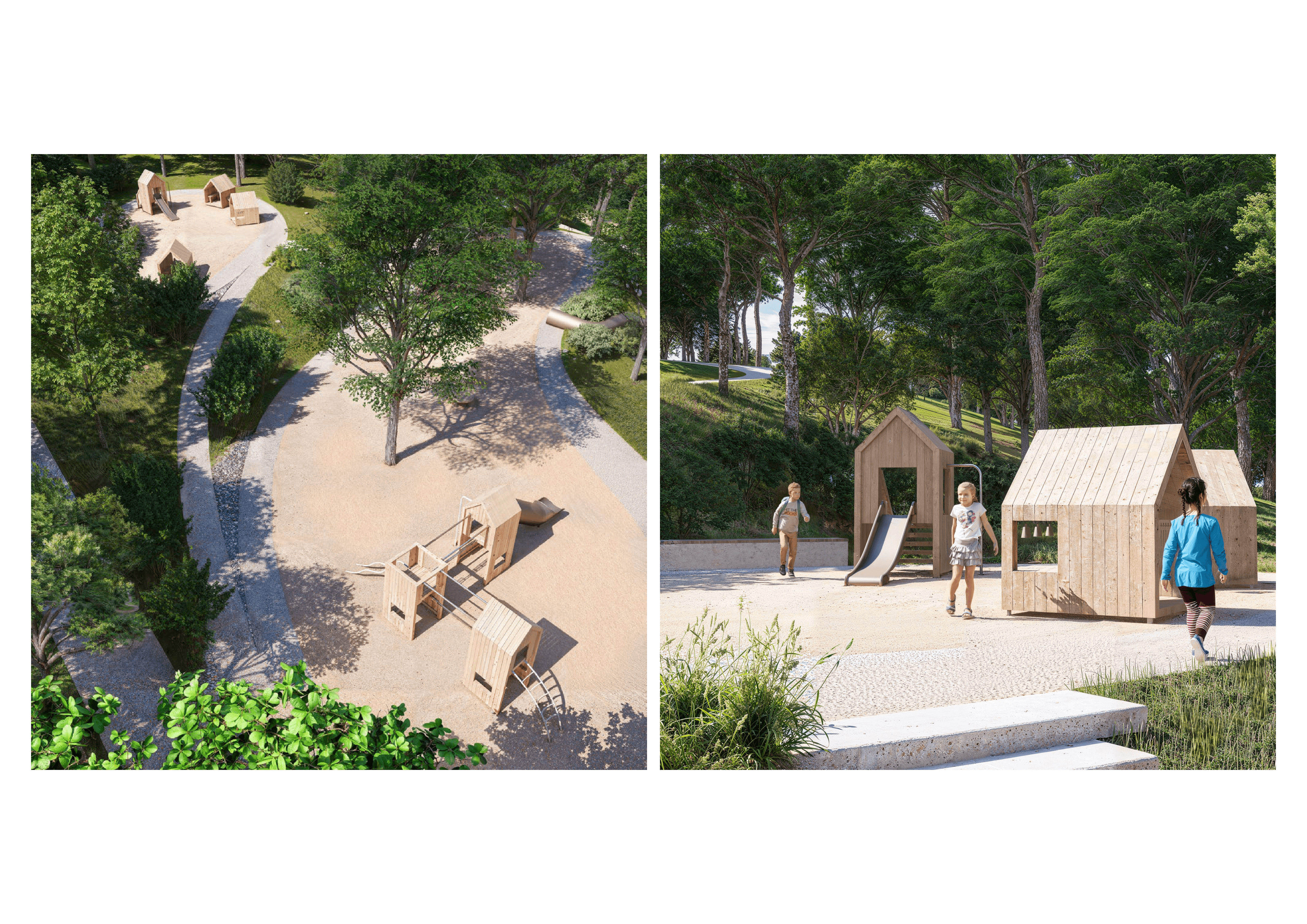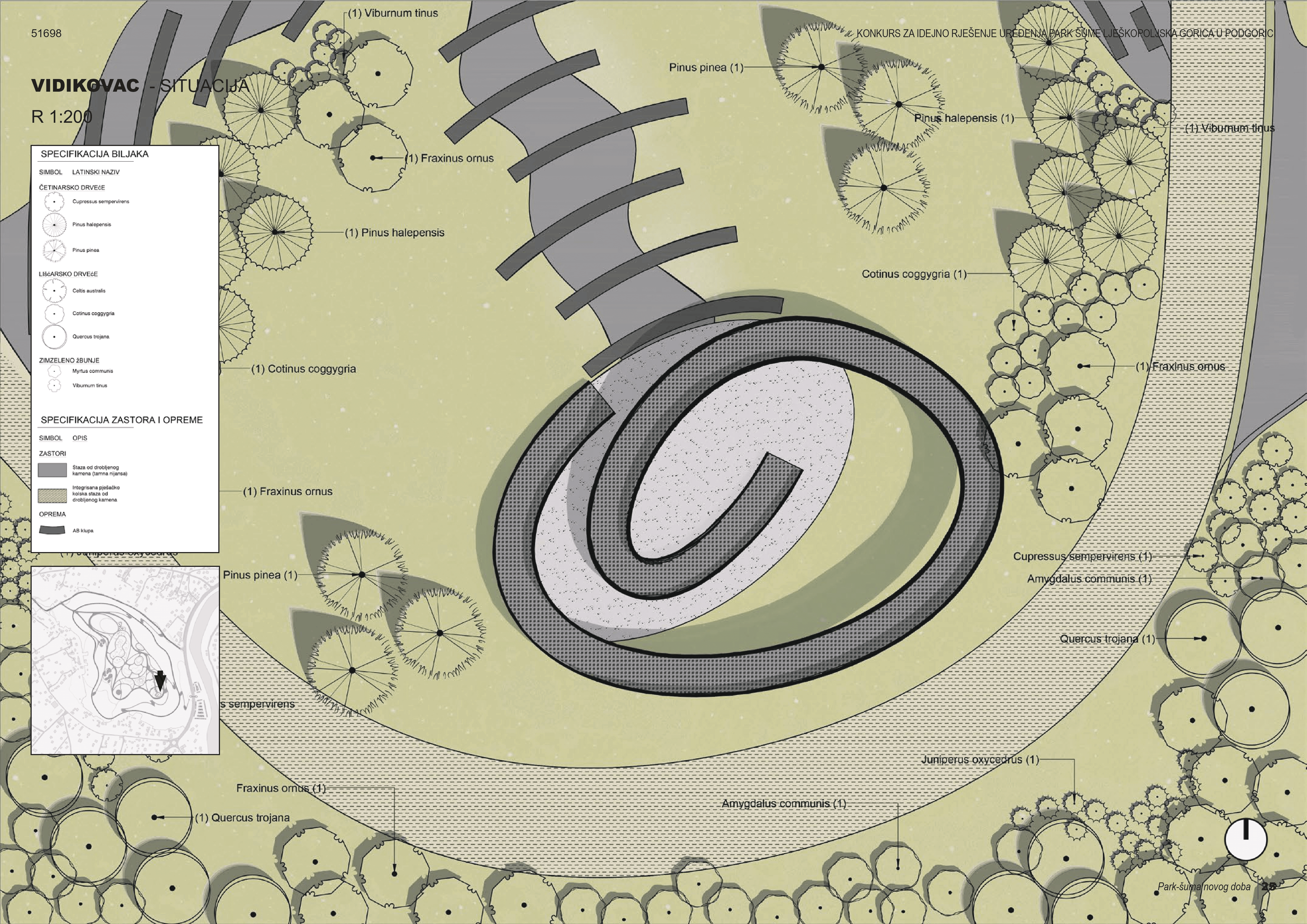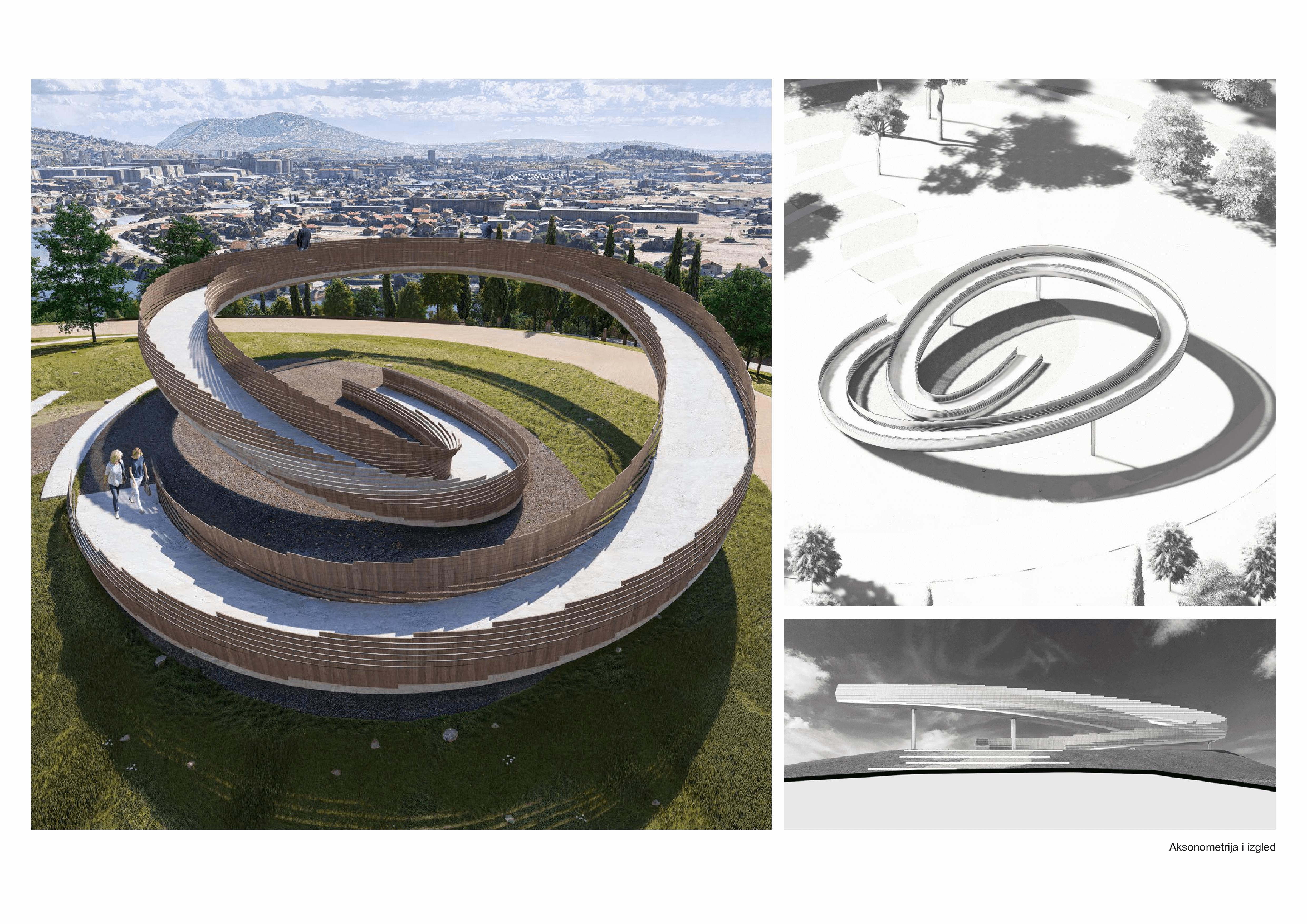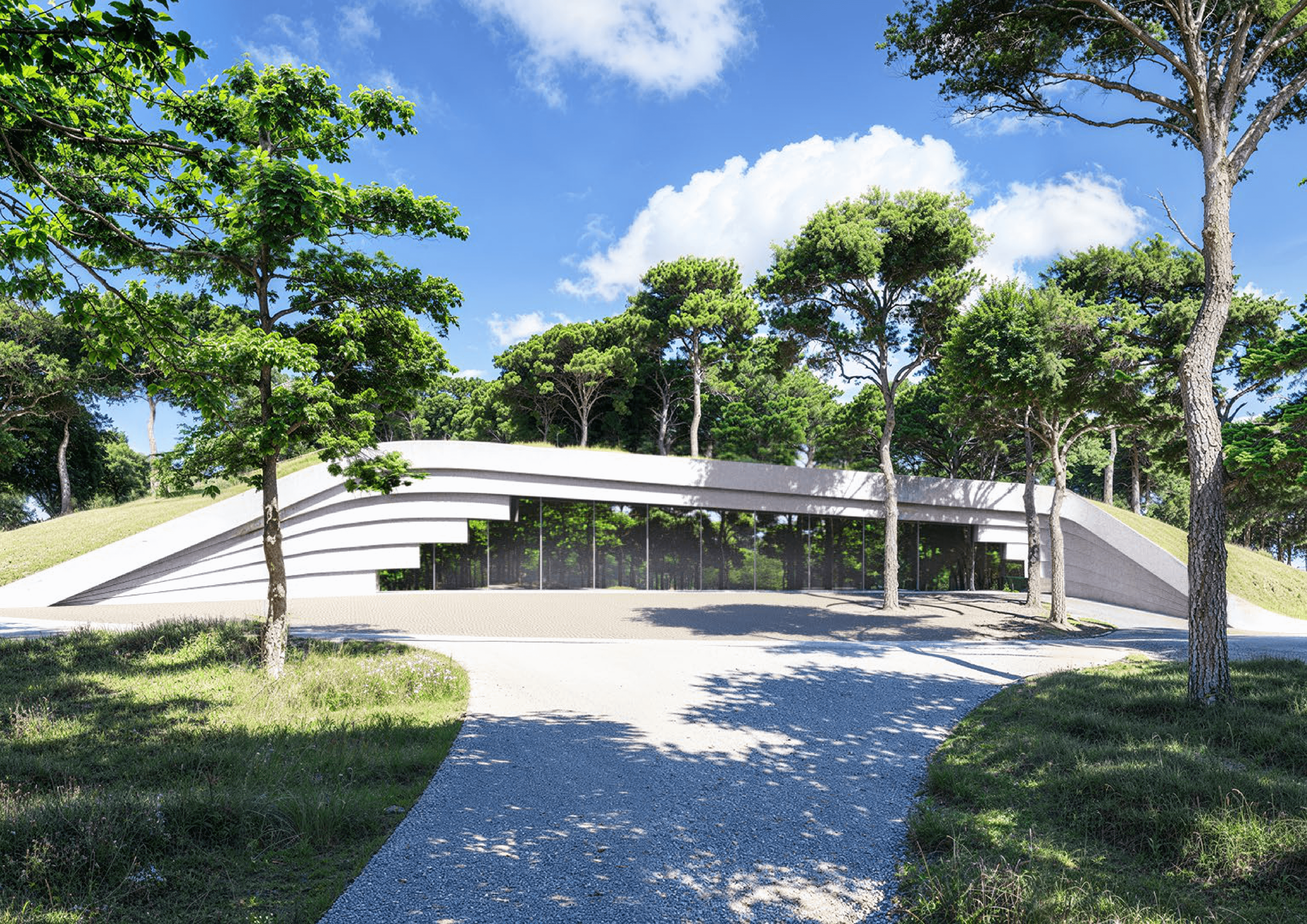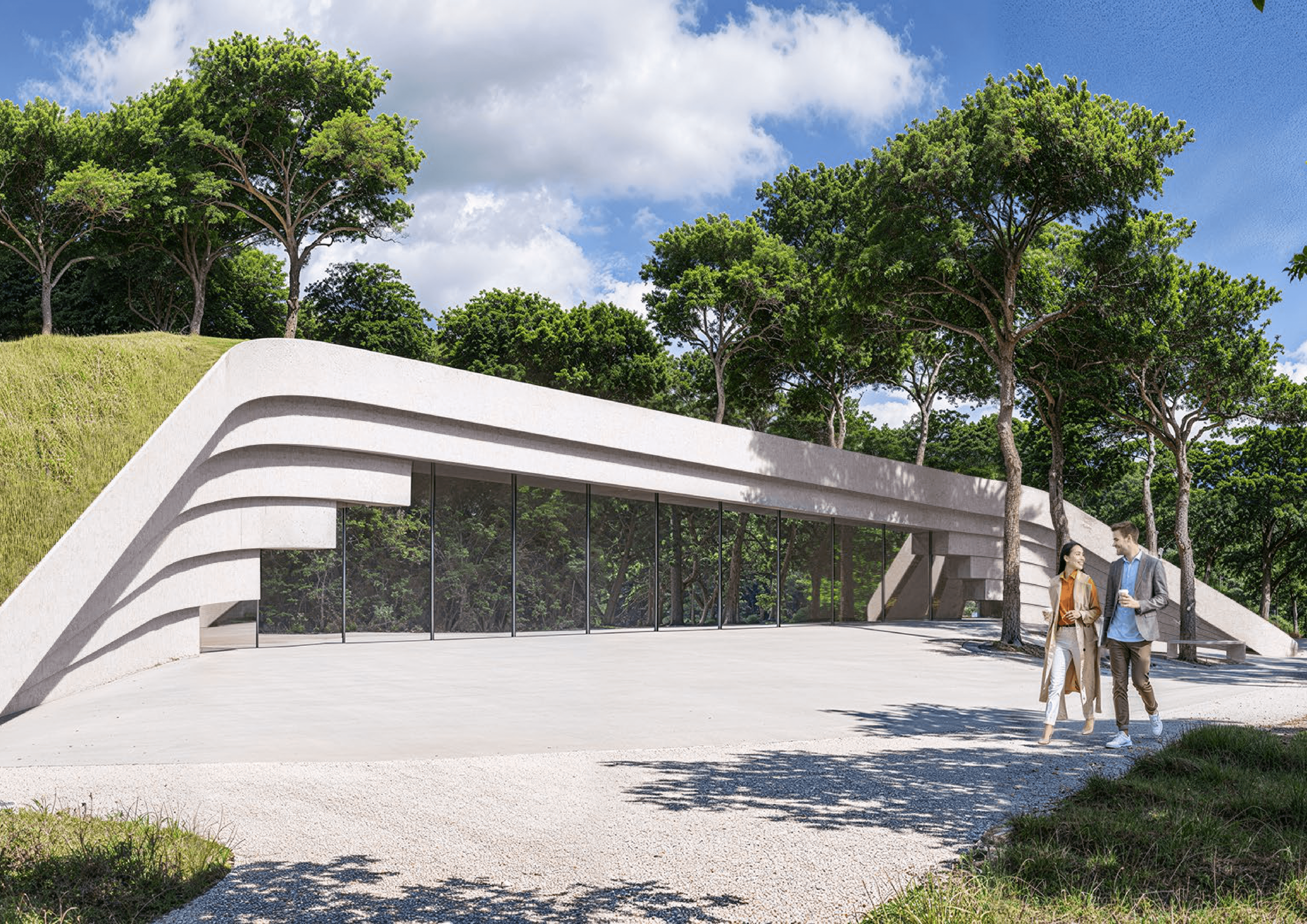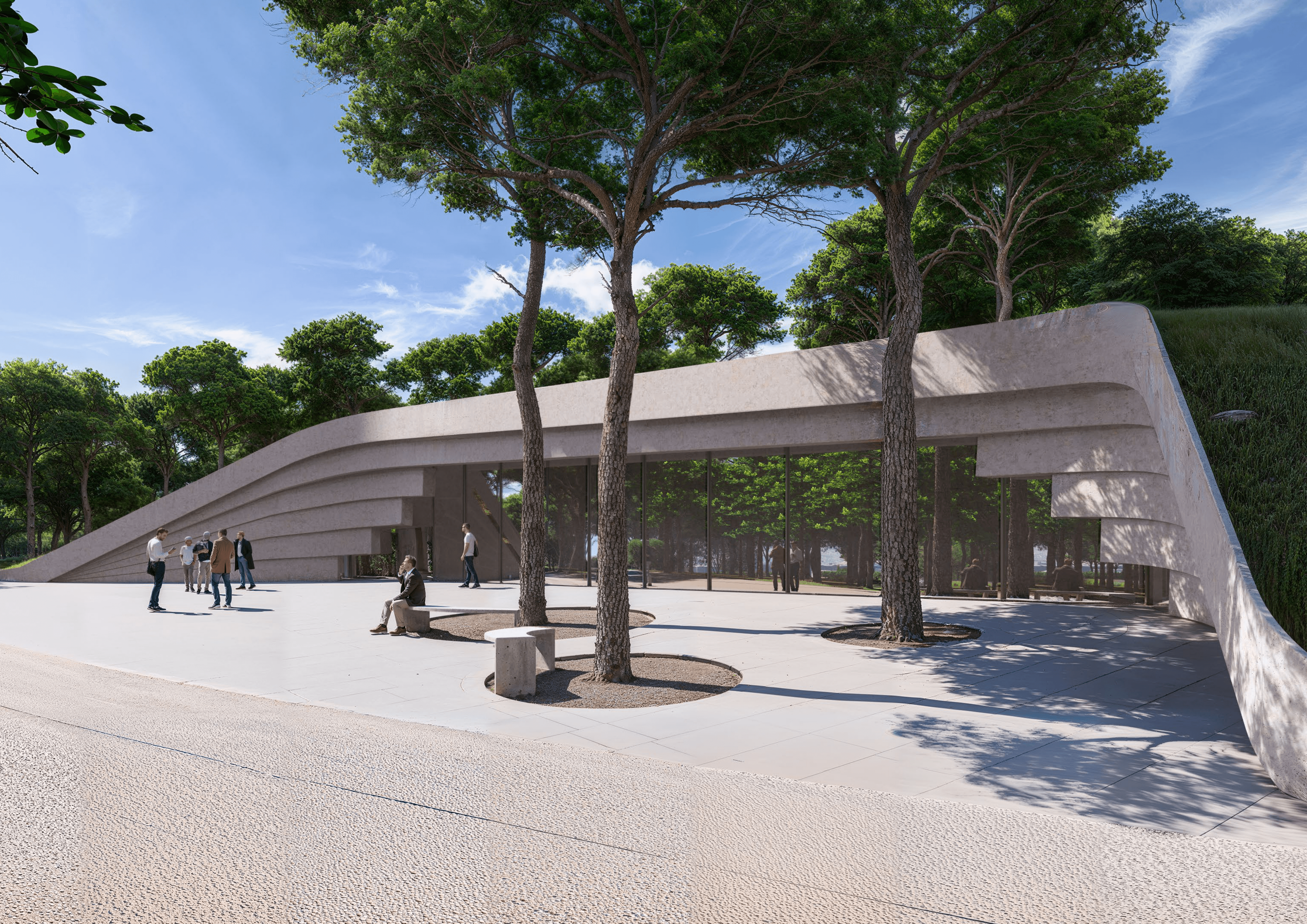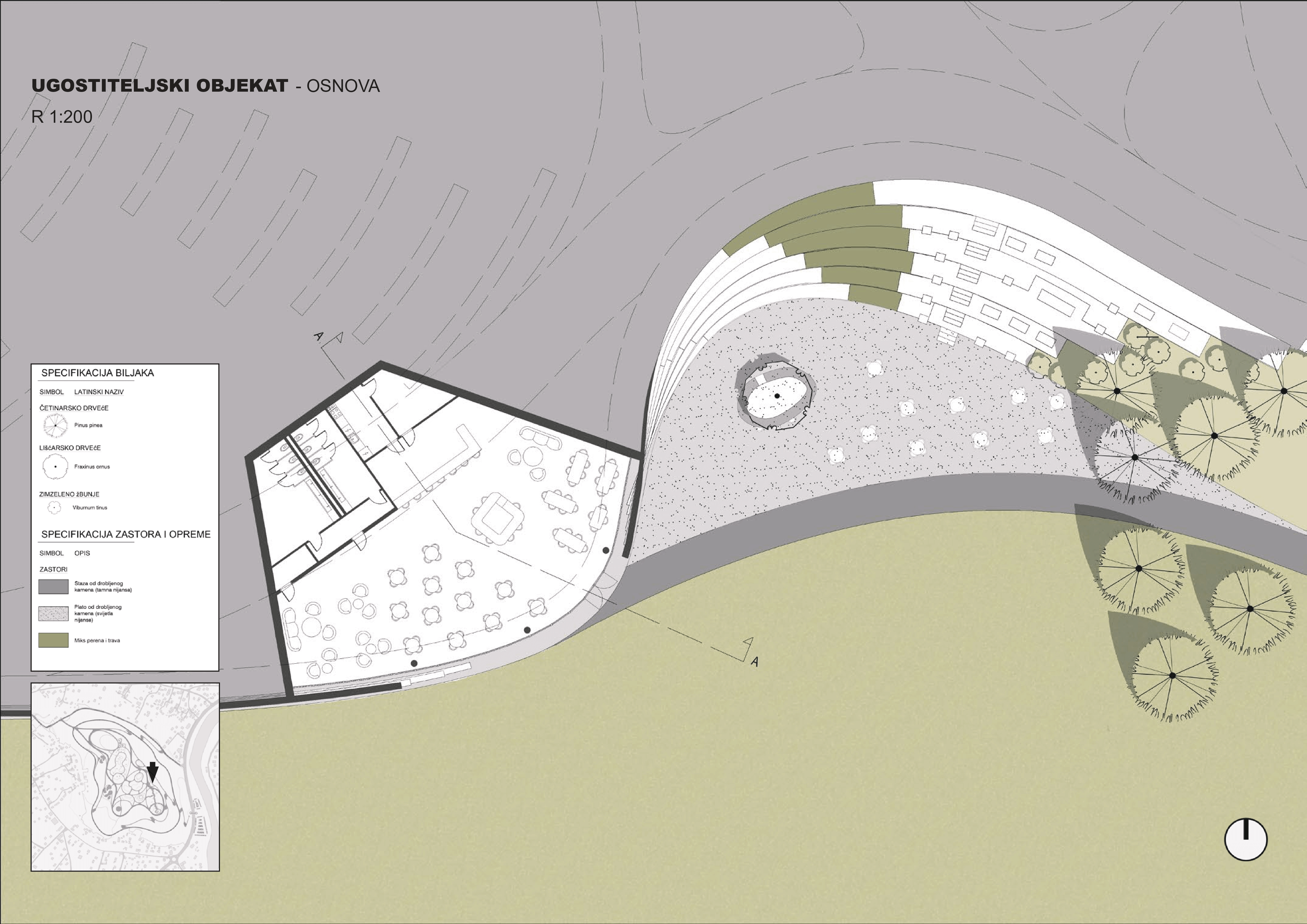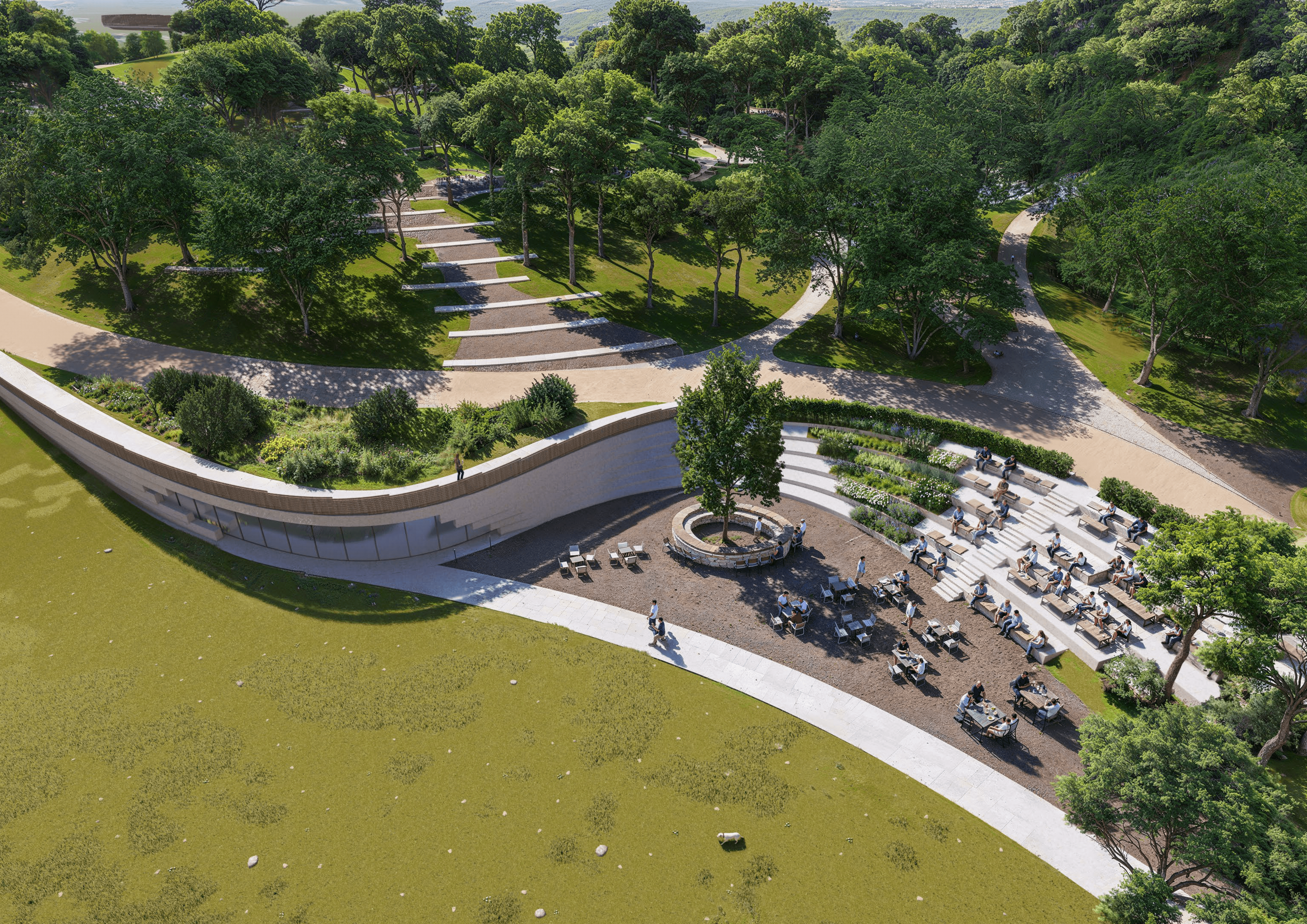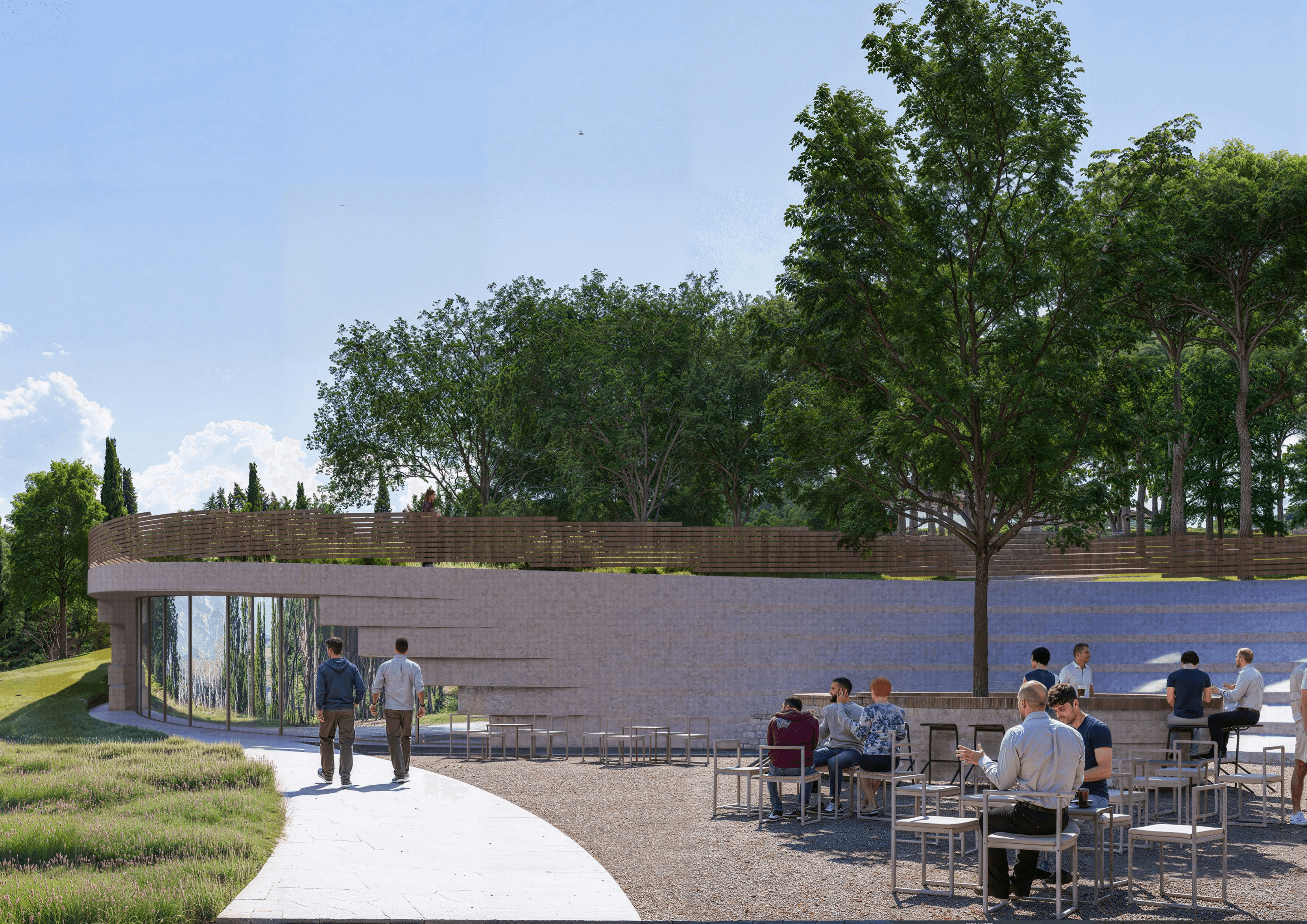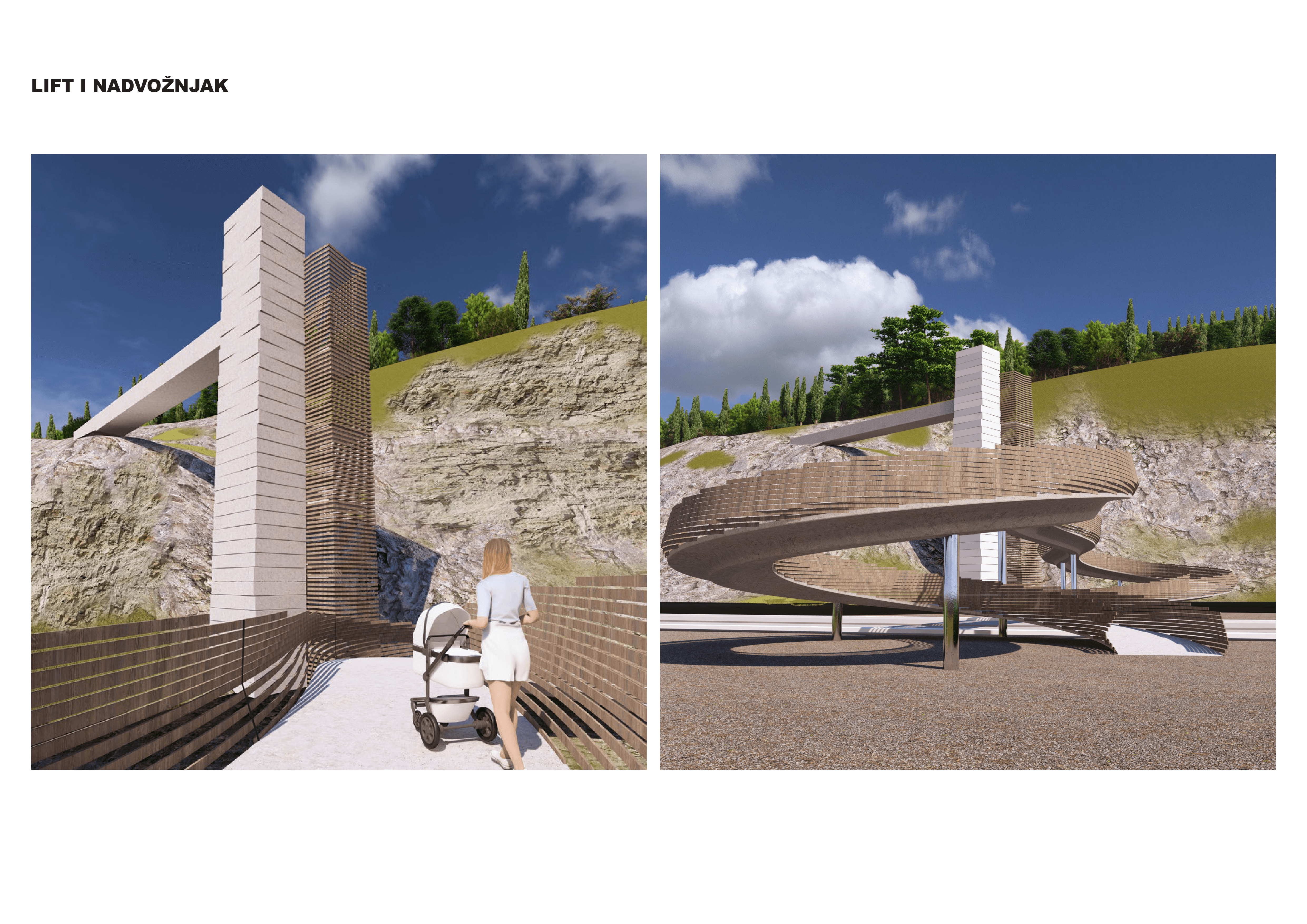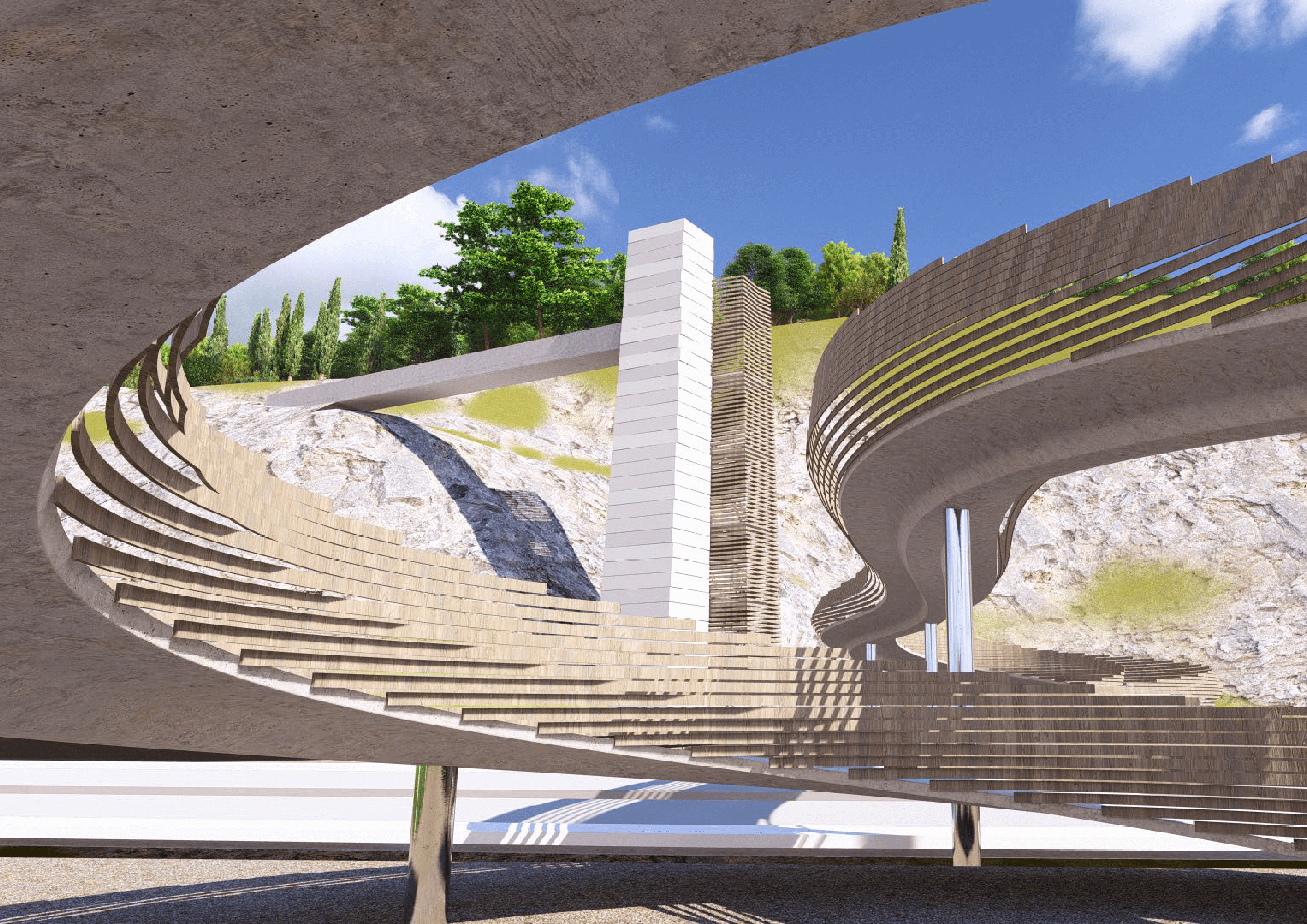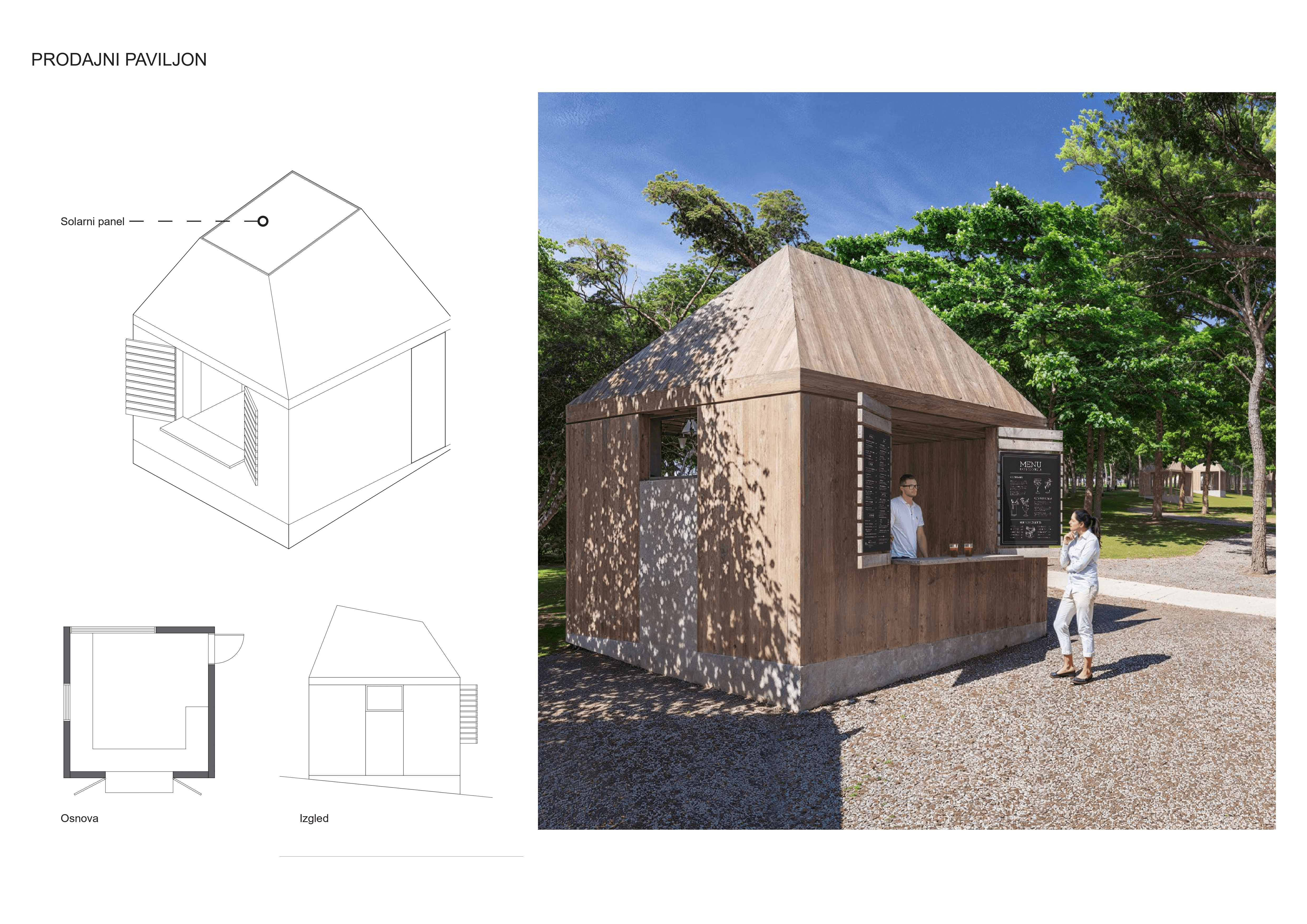Gorica Forest Park
Concept Design for the Lješkopoljska Gorica Forest Park in Podgorica
The Lješkopoljska Gorica Forest Park, covering approximately 35 hectares, is envisioned as a modern, multifunctional space for recreation, culture, entertainment, and learning. Designed for diverse activities and interaction with its features, the park maintains a subtle and natural character, aiming to evoke a sense of freedom in connection with nature.
Today, more than ever, there is growing awareness of landscape and nature as valuable heritage—something that landscape architecture and architecture must both protect and enhance for future generations. At the same time, modern society seeks more meaningful leisure in preserved natural settings, with opportunities for education, recreation, and cultural engagement.
Through parks, we create a renewed experience of nature tailored to the needs of contemporary life. We aim to establish a dialogue with the landscape and integrate nature into the urban fabric. In this sense, the opportunity to develop a forest park within an urban environment is both a privilege and a significant responsibility.
Located in the southwestern part of Podgorica—between the Morača River, 21st May Boulevard, and the neighborhoods of Donja and Gornja Gorica—this area has great potential due to its proximity to the city center. Viewing this land as a multifunctional space brings added value in terms of ecological benefits, biodiversity enhancement, and integration with the surrounding landscape. Creating a park for a new era that meets the needs of modern users comes with even greater responsibility.
The goal is to visually and functionally integrate the park into its broader context, mitigate the effects of climate change, stimulate further urban development, and establish it as an attractive point for both residents and tourists. The park should enhance the city in ecological, cultural, educational, and even economic terms.
The concept is based on ecological principles that prioritize the human–nature relationship, their synergy, and sustainable development. The design is human-centered and aligned with the principles of sustainable architecture, including the rational use of resources and energy, eco-friendly materials, and the planting of both native and non-native tree species.
The design concept is inspired by the natural and geomorphological features of the Lješkopoljska Gorica hill. Trails follow the terrain’s morphology, connecting different program zones while allowing for all types of recreational use. Circulation paths are carefully planned to ensure fluid connections within the park and to adjacent areas.
Green space planning was approached in two directions: the dominant one includes forming a dense forest belt along the edges, while the other focuses on greenery surrounding built structures, where a more urban but still landscaped character was applied to ensure visual and spatial cohesion with the rest of the park.
